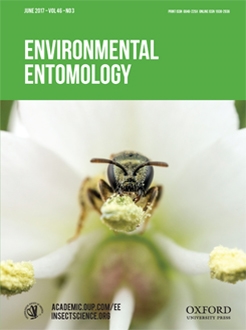The impacts of weed biological control agents may vary with plant ontogeny. As plants grow, structural and chemical changes can alter plant resistance, which may reduce herbivory via chemical or structural defenses, and plant tolerance, which may enable plants to maintain fitness despite attack. Resistance and tolerance generally increase as plants grow. Nonetheless, prerelease tests of agent efficacy often overlook plant ontogeny. Here, we assess the performance and impacts of a candidate biocontrol agent, the psyllid Arytinnis hakani (Loginova), in relation to the age of its host plant, the invasive shrub French broom, Genista monspessulana. We also examined whether the psyllid can consistently kill plants when its densities are sufficiently high. Survival of psyllids to adulthood and the timing of adult emergence did not differ between plant sizes, indicating that performance of nymphs was not influenced by plant size. However, adult psyllid survival was reduced on small plants, suggesting that nymphs and adults responded differently to ontogenetic changes in plant quality. Psyllids affected the growth of small and large plants similarly; all measured plant growth parameters were lower in the presence of psyllids regardless of plant size. In a separate experiment, effects on plant survival depended on psyllid density, as higher realized densities of ~9 psyllids per cm stem length were necessary to consistently kill plants. Thus, results suggest that the psyllid would be equally effective on a range of plant sizes, particularly at high densities, and show the potential of the psyllid to help control French broom in California.
How to translate text using browser tools
10 April 2017
Impacts of the Psyllid Arytinnis hakani (Homoptera: Psyllidae) on Invasive French Broom in Relation to Plant Size and Psyllid Density
Brian N. Hogg,
Patrick J. Moran,
Lincoln Smith
ACCESS THE FULL ARTICLE
It is not available for individual sale.
This article is only available to subscribers.
It is not available for individual sale.
It is not available for individual sale.

Environmental Entomology
Vol. 46 • No. 3
June 2017
Vol. 46 • No. 3
June 2017
agent efficacy
Arytinnis
biological weed control
Genista
plant ontogeny




